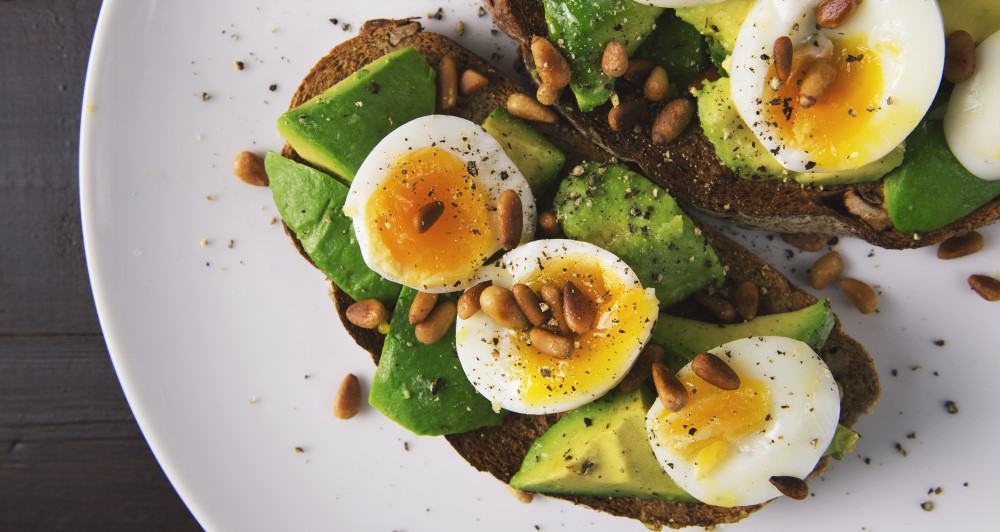Anyone who has ever made a tough diet, going into the single-digit body fat area, knows the problem: Stubborn fat.
A small bastion of body fat still provides resistance despite intense exercise time and greatly reduced calorie intake. It quickly becomes clear to most of them that they will lose a not inconsiderable amount of muscle in order to get rid of these fat deposits as well.
But can Intermittent Fasting help to lose stubborn fat?
These fat reserves, which the body does not want to give away, are referred to as “stubborn fat”.
I had already suggested that intermittent fasting can bypass the problems of getting rid of stubborn body fat. In fact, rarely do I have to resort to specific strategies to empty my clients’ stubborn fat deposits, and I’d like to tell you why that is – but let’s start with some background on the subject.

What is stubborn body fat?
The term stubborn body fat refers to the body zones that store the fat longest. Basically, these areas are the lower abdominal region as well as the lower back in men, while in women it is the lower body. These regions are damned hard to get fat free (or at least largely fat free).
But how is it that these areas are so stubborn? To understand this, let’s first look at how fat is mobilized. Ready?
After a meal, the insulin level, and the concentration of fatty acids (in the blood) increase. It is in the saturated phase where no fat burning takes place. In the following hours, the body gets its necessary energy via the oxidation (metabolism) of glucose.
One way to measure this is e.g. the so-called respiratory quotient (RQ). A quotient of 1.0 indicates a pure carbohydrate metabolism (“storage mode”), while a value of 0.7 indicates an increased metabolism of fatty acids (lipid metabolism). In the context of intermittent fasting, this means for the RQ: 1.5 – 2 hours after a meal, the RQ is between 0.95 – 1.0. For the period after overnight fasting, the quotient is 0.82 – 0.85, and after a lent of 16 hours, the value is between 0.72 – 0.8.
As more time passes after a meal and after the nutrients are absorbed by the body, both the RQ and the insulin concentration decrease. There is now a shift towards fat burning (and thus a mobilization of stored fat) instead. This process is triggered by insulin levels and fatty acids in the blood. As the concentrations drop, the body locks in on an energy deficit and, as a result, increases the secretion of catecholamines (epinephrine and norepinephrine).
The catecholamines in the blood bind to receptors of fat cells. These receptors can be understood symbolically as a “lock”. Hormones and neurotransmitters are the keys that fit in these locks and subsequently cause a reaction. In this case, the catecholamines trigger (activate) fat mobilization via the activation of the so-called “hormone-sensitive lipase”, or HSL for short, which then, in turn, creates the fat from the actual cell so that it can subsequently be burned (metabolized).
Here is the essential difference between normal fat and stubborn fat deposits. Normal adipose tissue has much more beta-2 receptors relative to alpha-2 receptors.
Lyle McDonald’s book “The Stubborn Fat Solution” uses the following analogy: Beta-2 receptors are the so-called “gas pedal” for fat loss, whereas alpha-2 receptors behave like a “(auto) brake”. This is the easiest way to be able to visualize these two receptors without having to go too deep into the body physiology.
The relationship between beta-2 and alpha-2 receptors determines how easy it is to burn fat in certain parts of the body. “Simple” or “light” fat burning occurs when the fat of the body region has a high number of beta-2 receptors relative to alpha-2 receptors, whereas persistent fat pads have multiple numbers of alpha-2 receptors relative to beta-2 receptors.
A noteworthy example cited by Lyle in his book is the fact that women have up to nine times (!) The number of alpha-2 receptors in relation to beta-2 receptors, in the area of their hips and thighs.
If you are also interested in the general benefits of intermittent fasting, take a look at this overview we created for you!

Intermittent fasting and loss of stubborn body fat
How is it that intermittent fasting burns stubborn fat better than other diets? Now, to metabolize stubborn fat deposits, the beta-2 receptors must be activated and the alpha-2 receptors deactivated. This provides intermittent fasting through the following mechanisms.
Fasting increases catecholamine levels
Fasting increases subcutaneous blood flow in the abdominal area, which makes it easier for the catecholamines to enter this region (and, as a result, dock to the fat cell receptors).
The low insulin level during fasting inhibits a2 receptors. More time in the “fast window” also means more time in which fat can be mobilized from stubborn regions. Now you might think “why not just do a low carb diet” to keep the insulin concentration low. However, one must not forget that triglycerides (= fats) inhibit hormone-sensitive lipase – similar to insulin.
My research suggests that the ideal state of fat burning is reached after about 12-18 hours of fasting. Combined with a high level of catecholamines, increased subcutaneous blood flow in the persistent fat regions, and a low insulin level for the required alpha2 receptor inhibition, this period can be considered the “golden age” for the mobilization of stubborn fat.
Let me briefly explain what I mean by an ideal state of fat burning: Studies have investigated the oxidation of free fatty acids (FFA) – in different areas between the fasting state after getting up to three continuous days of fasting. While the FFA oxidation has increased, the longer the fasting period, the proportion of burned fatty acids has changed in relation to the total body fat metabolism.
During short lasts, there is a significant increase in the oxidation of subcutaneous free fatty acids. This is just an elaborate paraphrase for the simple statement: you burn fat and nothing else. For a period of 14 – 20 * hours after a 600kcal meal, fat is only mobilized by the fat deposits in a dormant, normal-weight person.
* 14 – 20 hours during quiet sitting still – it should be easy to reach this state in real life within 12 – 18 hours.
After this time window (14 – 20 hours) the fat burning continues to increase. However, this is not necessarily the type of fat that we would like to burn. Somewhere between 10 – 30 hours, the oxidation of intramuscular fat increases significantly, while no increase in the subcutaneous fat deposits is recorded.
The subcutaneous depots cannot keep up with the amount of energy demanded by the body, so this is a small degree between advantages and disadvantages when the fasting window is stretched too long. In combination with the increasing rate of gluconeogenesis (saccharification of protein) and subsequent risk of catabolic state of the muscles, very long periods of fasting are not conducive if the goal is a loss of stubborn body fat while maximizing muscle preservation.
Science vs. real life
Critically Investing Readers should now ask themselves if it takes any special approaches to get rid of stubborn fat. After all, many people have already managed to “lean” without intermittent fasting or other strategies as described in “The Stubborn Fat Solution” by Lyle McDonald. Is not it just about getting the body fat percentage down as far as possible? The stubborn fat you lose then anyway inevitably, or not?
Would it make a difference in regional fat loss if we compare a commonly practiced diet with a deficit of 3500 kcal per week to an identical deficit in an intermittent fasting diet (or “The Stubborn Fat Solution”) (assuming that all other factors are kept constant)? I do not think we’ll ever know that – so the statement is reduced to theoretical considerations and practical insights.
My personal experience is that intermittent fasting is better at getting rid of stubborn fat when compared to a classic diet.
Conclusion: Intermittent Fasting against Stubborn Fat
I managed to lose most of my stubborn fat with intermittent fasting. I would like to add that I have already heard similar to clients and blog readers. Intermittent fasting seems to be beneficial when it comes to getting rid of stubborn fat. Have you had a comparable experience? Let us know.
Cheers,
Sam





1 thought on “Intermittent Fasting against Stubborn Fat”
Pingback: 5 Useful Mindhacking Hints - Brain Derived Neurotrophic Factor